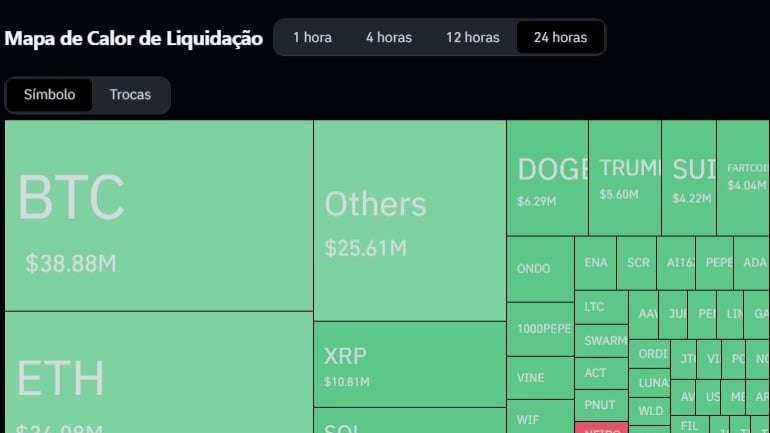Global central banks now hold 12.1% of all gold reserves, the highest level since the 1990s, and this percentage has surged, more than doubling over the past decade.
Leading the gold-buying frenzy are China, India, Turkey, and Poland. China alone hit a new high in 2024, reaching 2,264 tonnes, with gold now accounting for 5.4% of its foreign reserves.
Global demand and strategic diversification
Gold prices have hit records repeatedly this year, climbing 35 times to date and surging 33%. The precious metal reached a peak of $2,772 per troy ounce this week and has continued to rise over six of the last seven weeks.
The numbers speak for themselves: this year’s gold returns are up 33%, outpacing the broader stock market by 10% and even beating the Nasdaq 100. Since the latest bull market began in October 2022, gold returns hit 67%, higher than the S&P 500’s 63%, according to YCharts data.
The World Gold Council reports that banks purchased 483 tons of gold in the first half of the year. This massive buying spree is mainly driven by a push to diversify away from the U.S. dollar, which has dominated global trade and finance for decades.
“We believe that the tripling in central bank purchases since mid-2022 on fears about U.S. financial sanctions and sovereign debt is structural and will continue,” said Goldman Sachs.
The buying trend accelerated post-2022, right after Russia’s invasion of Ukraine prompted America to impose severe economic sanctions. The U.S. dollar’s dominance has become a strategic vulnerability for some countries, especially those seeking economic autonomy.
See also Russia's Vladimir Putin kicks off BRICS’ most important summit yet
De-dollarization is starting to take off
Economist Mohamed El-Erian recently wrote in the Financial Times that the rise in gold holdings captures a shift in behavior among China and “middle power” nations.
El-Erian added, “There is also interest in exploring possible alternatives to the dollar-based payments system.” Russia’s success in breaking off its economy away from the dollar amid sanctions is inspiring other countries to follow suit, reducing their dollar dependence and boosting their gold holdings.
Gold’s appeal as a “safe haven” asset grows stronger too, with rising geopolitical tensions. With conflicts stretching from Ukraine to the Middle East and China’s continued pressure on Taiwan, investors are turning to gold as a stable asset in volatile times.
U.S. debt is surging, making Treasuries, traditionally seen as a secure investment, look increasingly risky. Bank of America even said that, “Gold looks to be the last ‘safe haven’ asset standing,” pointing out that the metal’s stability is driving demand among traders and central banks alike.
The SPDR Gold Shares ETF, the largest gold exchange-traded fund, manages $78 billion in assets and has seen a $5 billion inflow in the last six months, based on data from ETF.com. Physical gold is also flying off shelves.
Costco has had consistent sellouts of gold bars online, with estimates from Wells Fargo showing up to $200 million in gold bars and silver coins sold to Costco members monthly.
See also Trump pulls ahead of Harris on US economy in FT-Michigan Ross last poll
Political climate and interest rates drive gold demand
Political developments in the U.S. also impact gold demand. The “Trump trade” is gaining traction as former President Trump’s election odds improve, pushing up expectations of a widening government deficit.
Economist Davix Oxley of Capital Economics points out that if Trump wins, concerns about fiscal discipline, the Fed’s independence, and rising inflation will likely drive even more investors towards gold.
Oxley said, “If you’re worried about fiscal profligacy, financial repression, and attacks on Fed independence, gold would be an attractive asset.”
Even if Trump doesn’t win, a growing deficit seems inevitable, which could favor gold in the long run. Interactive Brokers chief strategist Steve Sosnick explained that neither major party appears committed to fiscal discipline, with the Fed inclined to lower rates even if inflation runs slightly above target.
He added that, “Gold could be a viable alternative if rates rise and the economy stays sound. And if the economy isn’t sound, it could still be a good store of value.”
Interest rates directly influence gold’s appeal. Historically, falling rates boost gold prices, with the metal appreciating by as much as 10% within six months of a Federal Reserve rate cut.
While the Fed has raised rates since last month’s cut, pushing the 10-year Treasury yield to its highest point since July, gold prices continue to rise. This means that global investors are eyeing long-term rate trends, expecting further cuts from central banks.




